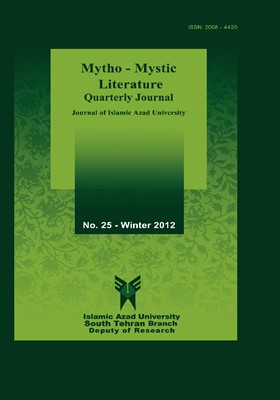-
-
List of Articles
-
Open Access Article
1 - The Animus in Epic Myths: A "Mythological Criticism of Depth" Approach
بهروز اتونی -
Open Access Article
2 - The Myth Characters in the Poetry of the Constitutional Revolution
غلامرضا رحیمی رحمان ذبیحی سمیه عباس زاده -
Open Access Article
3 - Immortality in Zoroastrian and Semitic Mythology: A Comparative Study
مهدی رضایی حشمت ا... آذرمکان -
Open Access Article
4 - Mowlānā Jalāl-al Din Balkhī and the Alienation of Man
مجتبی صداقتی فرد فرهاد ابی زاده -
Open Access Article
5 - Archetype of Shadow and the Soul in the Poems of Attār-e Neishābūri: A Comparative Study
سعید قشقایی -
Open Access Article
6 - Ecstatic Expressions (Shat’hiyāt) of Eyn-ol Qozāt-e Hamedānī
فاطمه مدرسی مونا همتی مریم عرب -
Open Access Article
7 - Nezāmī Ganjavī: A Mystic Poet?
یعقوب نوروزی حجت ا... قهرمانی
-
The rights to this website are owned by the Raimag Press Management System.
Copyright © 2021-2025







